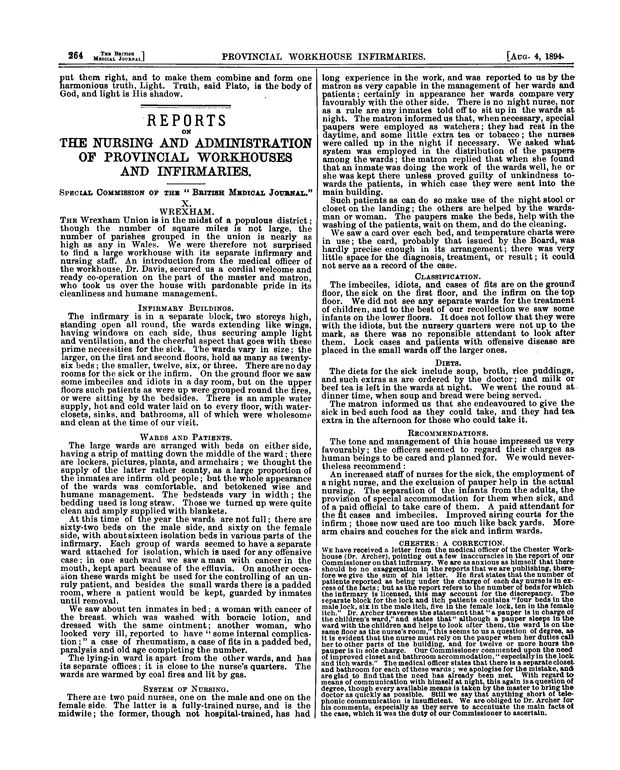Having just read Anthony Trollope’s The Warden, with its depiction of a Victorian church almshouse, and recently discovering that one of my own ancestors, Mary Elizabeth Raley, was an assistant matron at Wakefield Workhouse in the nineteenth century, I felt compelled to investigate the history of my local workhouse.
Wrexham Workhouse Infirmary was opened in 1838 and closed in 1948. It was built on a site to the west of Wrexham town centre and was designed to accommodate 400 inmates. It had separate accommodation wings for the different classes of inmate (male/female, infirm/able-bodied, adults/children) with each wing radiating from a central hub.

Wrexham Workhouse Infirmary, 1838
The workhouse was run by a Board of Guardians who were elected by the ratepayers of the Wrexham Union. The Board appointed a Master and Matron to oversee the day-to-day running of the workhouse. Able-bodied inmates were expected to toil in the workhouse’s workshops or farm. Infirm inmates were provided with food, clothing and shelter, but were not expected to work.
The workhouse was a place of last resort for the poor and needy. It was a harsh and unforgiving environment where inmates were subjected to a strict regime of discipline and hard work. Women with more than one illegitimate child, for instance, were required to wear a distinctive dress. However, the workhouse also provided a basic level of support to those who were unable to support themselves.
In 1894, the British Medical Journal set up a commission to investigate conditions in provincial workhouses and their infirmaries. Following a visit to Wrexham, the commission’s report revealed that ‘the tone and management of this house impressed us very favourably; the officers seemed to regard their charges as human beings to be cared and planned for.’ Nevertheless, some improvements were recommended. 
However, Peter Higginbotham, in his extensively researched 2021 book Workhouses of Wales and the Welsh Borders, paints a much less rosy picture. He reports grim medical and sanitary conditions at Wrexham and instances of disease being spread by sick and well inmates having to share the same limited privy provision. An inspector’s report in 1920 gave a depressing picture:
Building is roughly built, the walls unplastered and the wards badly ventilated. There are no damp courses in the walls and the floors in many parts are worn through and harbour dust and dir. Most of the windows are of iron. The arrangements for rapid exit in case of fire are very unsatisfactory and in view of the inflammable nature of the buildings, which are full of dirt timber, this is of considerable importance.

Apartments on site of former Wrexham Workhouse Infirmary, 2023
The Wrexham workhouse eventually closed in 1948 as part of the national abolition of the Poor Law system. The building was later demolished and the site is now occupied by an apartment block.

Grim, weren’t they? I spent part of my childhood in Andover, which was notorious for its workhouse – I believe the building is now luxury flats, rather ironically…
Yes, Higginbotham’s book has some real horror stories.
Hope you enjoyed The Warden. Seems that the workhouse was an institution designed more for punishment than for providing a haven.
I can’t help but think that the welfare state has gone into reverse in the last couple of decades and we’re back to victim blaming.
Wrexham! Have you been on the telly yet in the background?! This is really interesting. It horrifies me that we seem to be slipping back in this direction.
It’s been great for the town with loads of community involvement by the owners, mainly below the radar.